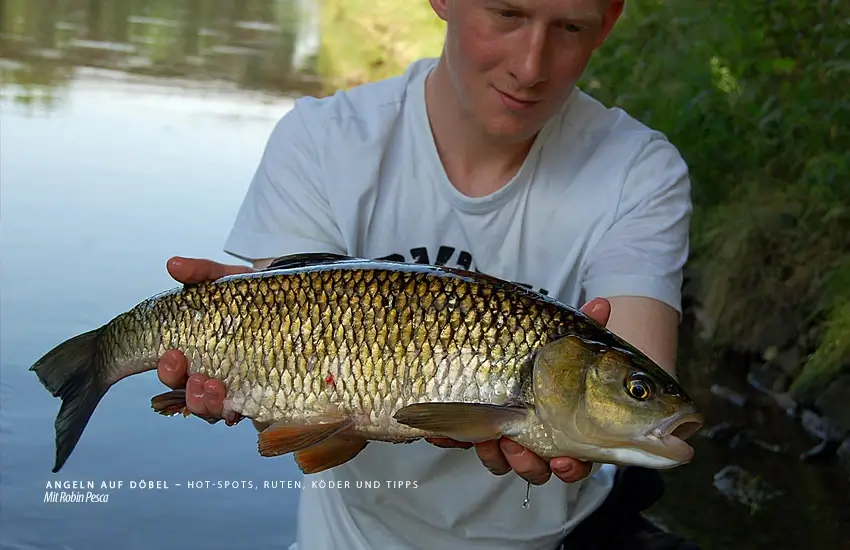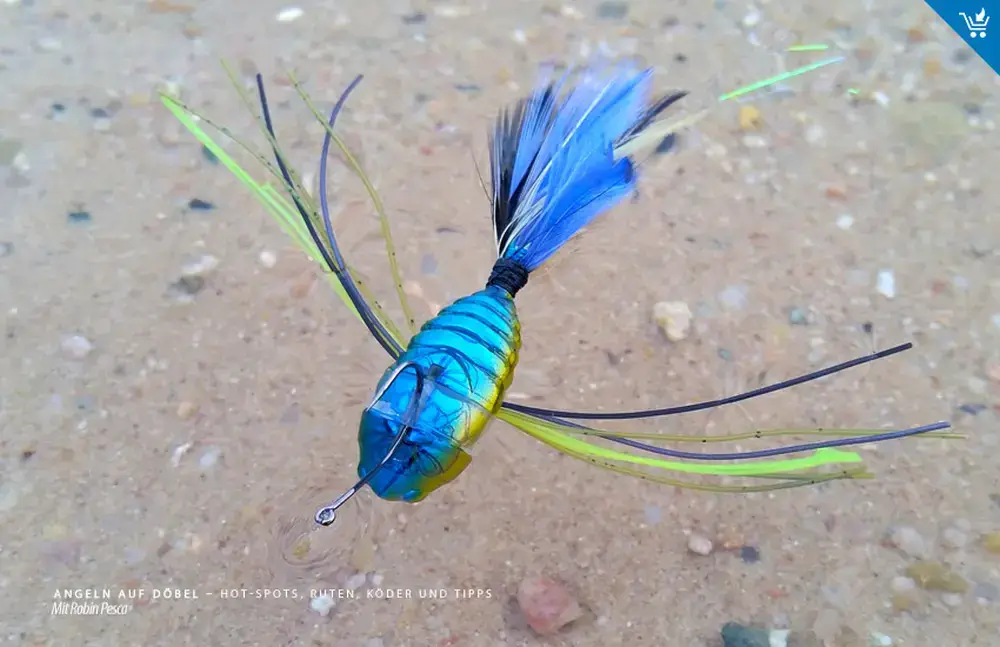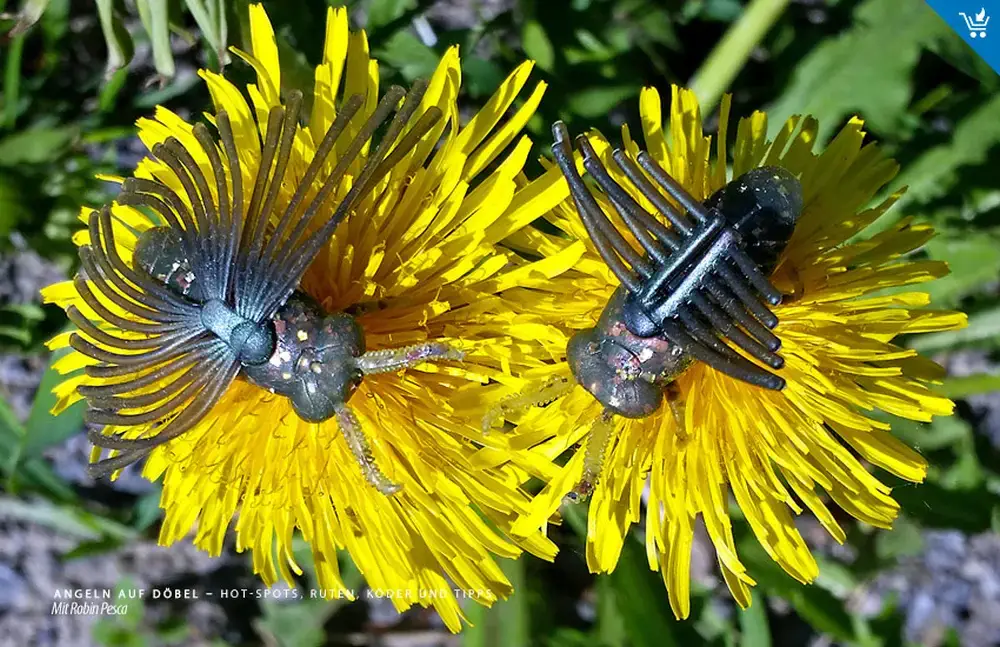Chub fishing
Aitel, Alet, Chub. The last name is no coincidence. From a size of approx. 45 cm, chubs develop a very large head and grow into massive fish once they exceed the 50 cm mark. Even at the small fish stage, they are very shy and cautious fish that move around in large so-called “schools”. As soon as a chub has noticed you, it “warns” everyone else by swimming away and the chances of a successful catch drop to zero. Therefore, inconspicuous behavior on the water is a basic requirement - it's not called “chub stalking” for nothing.

You should always approach the chub against the current, i.e. from behind. It is also important to behave quietly on the bank. This also means, for example, that no stones should rumble loudly into the water. The cyprinid is widespread and thrives in large populations in almost all types of water.
Whether a large industrial river, canal or small trout stream, it can be found in almost every body of water from southern to central Germany. However, when stalking big chub, you should concentrate on streams that are not too small and have a strong current. You will find the right river mainly by searching and observing, as chub like to show themselves near the surface when the sun is shining.
The right bait for chub fishing
Chub are omnivores! They develop their preferences depending on which food is the priority in the water or which is currently abundant. However, everything else that looks halfway usable is usually not completely spurned. They can therefore be outwitted with rubber lures and wobblers, insect and fish imitations, crayfish imitations or spoons.
Treble hooks or single hooks for chub fishing?
Many hardbaits are delivered from the factory with 2 treble hooks. In order to release the cyprinids gently, the treble hooks should be replaced with barbless single hooks (recognizable by the BL in the name). If a big chub is hungry, it will knock the whole plug off. You don't want to have 2 treble hooks on the lure.
In addition, thick-wire single hooks are usually more stable than the standard treble hooks. And to retain the floating/suspending properties of the hardbait, you can't swap them for thicker, heavier treble hooks. When a large chub is really in the current, there is a lot of pressure on the hook. Models that are too thin-stranded will quickly bend open.
Chub rods - baitcasters or spinning rods?

As a rule, you don't need any fancy baitcasting or spinning rods specially designed for the target fish when fishing for chub. As the cyprinid can be caught with almost all lures, we have a large selection of rods to choose from.
The fighting power of a bullhead during a fight is very much dependent on the nature of the water. Factors such as flow speed, risk of snagging, average size, depth and also the time of year force us to adapt our equipment to the specific water. Even if chub, as is generally known, are not among the biggest fighters, big fish in particular know how to make clever use of the current.
For this reason, you should not necessarily use a UL rod in a fast-flowing stream, even though you are fishing with a 2g spoon, for example. Keeping the fight as short as possible should always be the top priority. Roughly speaking, you are well served in the 5-12g casting weight range. You should only venture below 5g if you are not fishing for large fish over the 50cm mark.
The length depends on the casting distance and bank vegetation of the water. However, most people use a longer rod for jigging than when fishing with hardbaits. Otherwise, we can use the perch rod segment for stalking predatory cyprinids. Here we simply choose the rod according to the type of bait.
Plugs for chub fishing - minnows, crankbaits and topwater stickbaits

When it comes to hardbaits, we have a choice between three main groups: Crankbaits, minnows and stickbaits.
Crankbaits are the typical chub wobblers. They are relatively small, bulbous, sometimes almost round and attract a lot of attention under water. Due to their shape, they displace a lot of water and thus play on the chub's lateral line organ. Especially in turbulent, murky water behind weirs or similar, they are easy to outwit.
Stickbaits have a similar area of application. These are also suitable for use in turbulent water behind weirs, in places with strong currents or in rushing water. As these only run on the surface of the water, they should mainly be used during the warmer months of the year when all the fish are active and the fry are on the surface.
The shape and run of the minnows imitate small fry best. Just like all other hardbaits, models up to 5cm, maximum 7cm are suitable. Larger models often attract the interest of chub, but bites are very rare.
Chubs love rubber baits!
Of course you can also fish for chub with soft baits. There are no limits here in terms of shape and form. You should orientate yourself to the main food. If this consists more of small fry, you should offer normal rubber fish between 1-3 inches in length. If they are more likely to find insect larvae or crayfish, it is worth trying various finesse rigs. Tipped with a rubber crayfish or creaturebait, you are sure to find a taker!
Insect imitations

Finesse topwading with small insect imitations is a very exciting fishing method. These are available as both hard and soft bait. Some of them are very lifelike, while others fall more into the creaturebait category. This method is particularly successful in the warm months of the year when there are lots of insects around and the chub are close to the surface and active. Now they react to anything that falls into the water and, curious as they are, will at least take a close look at it.
This is why insect imitations are now so catchy. We don't have to worry about attraction and a realistic design often does the rest. However, a big fish may not be completely convinced. A gentle tug on the loose line should then be used to set the bait vibrating slightly and make the chub believe it is an insect flapping its wings. These are presented on a light single hook on free line.
Chubs are very special fish. Sometimes you have a lot of followers, but they don't really seem to want to. This can definitely be due to the color. When fishing with hardbaits, we have had good experiences with shock colors such as chartreuse or orange. However, shock colors can also be too much of a good thing in very clear water. One color that always works is black. Somehow it seems to be the chub color par excellence. Both in clear and murky water, when cranking or topwatering: So far it has always brought success!